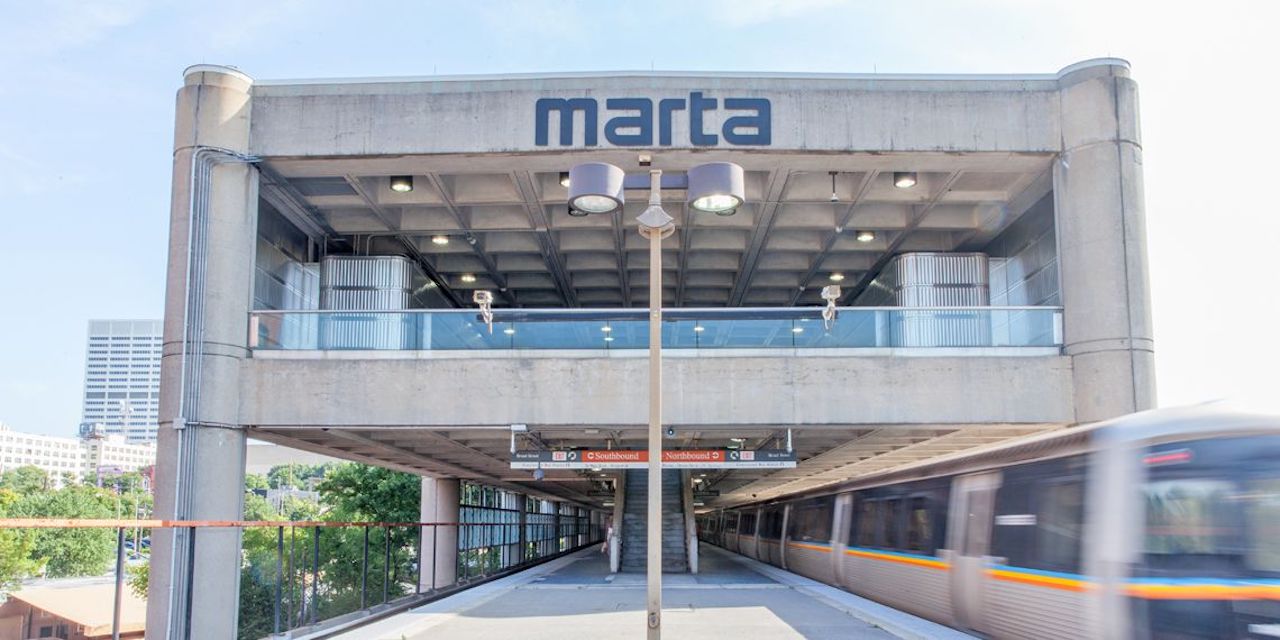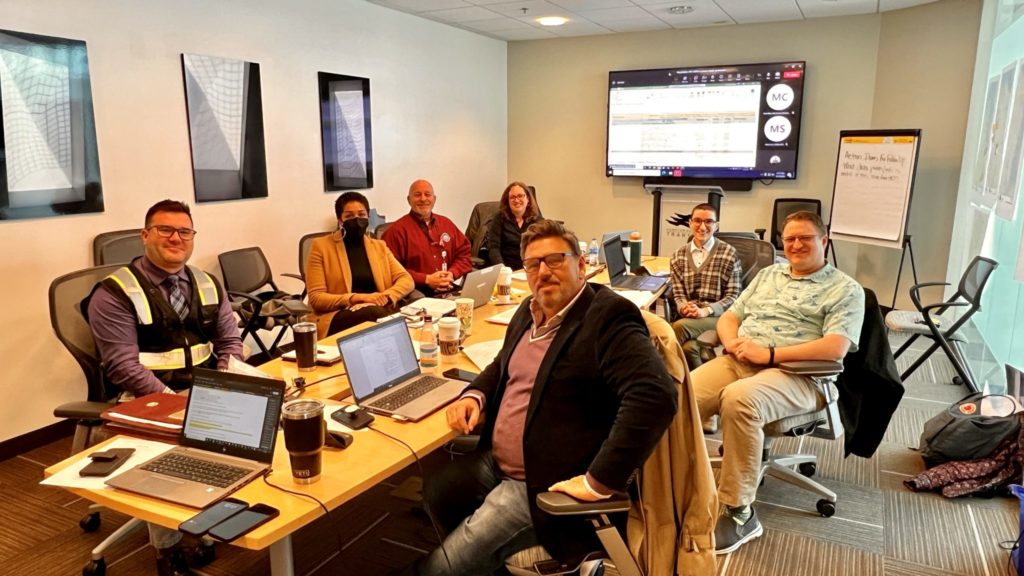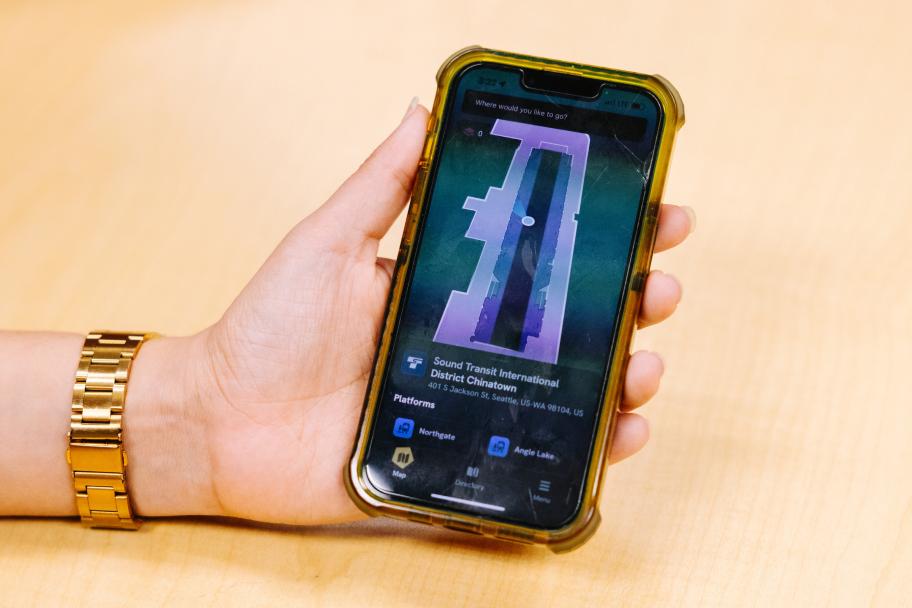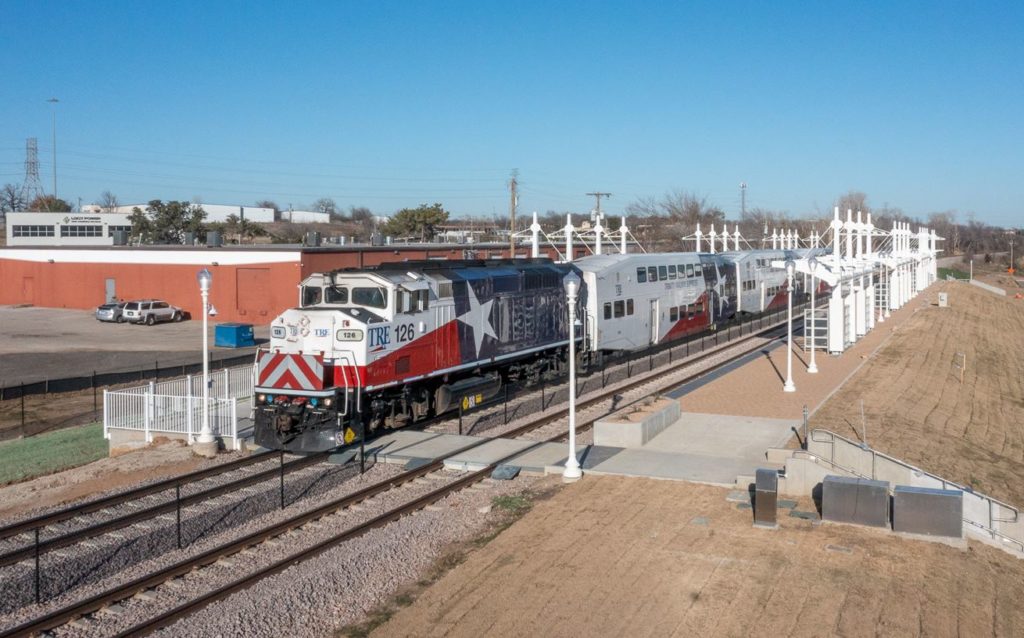
Transit Briefs: MARTA, Minn. Met Council, Brightline/FEC, HRT, SEPTA, Sound Transit, TRE
Written by Carolina Worrell, Senior Editor
MARTA photo
The Metropolitan Atlanta Rapid Transit Authority (MARTA) contracts INIT to implement a new fare collection system in time for the FIFA World Cup. Also, Minnesota’s Metropolitan Council transit ridership grows 16%; Brightline and Florida East Coast Railway (FEC) horns will continue in Indian River as County Commission nixes quiet zones; Hampton Roads Transit (HRT) receives Direct Technical Assistance (DTA) from the Federal Emergency Management Agency (FEMA); the Southeastern Pennsylvania Transportation Authority (SEPTA) receives $317 million for new Market-Frankford Line cars; Sound Transit’s new app is now available for download; and Trinity Rail Express (TRE) is now making stops at a new station in Fort Worth, Texas.
MARTA
INIT on Feb. 19 announced that it has been contracted by MARTA to provide a smart ticketing solution titled AFC 2.0 (automated fare collection) in time for the FIFA World Cup.
The new ticketing system, INIT says, will be state-of-the-art and include contactless payments for all MARTA’s buses, trains, streetcars and other revenue vehicles throughout the Atlanta metropolitan region. “It is INIT’s most comprehensive ticketing project in the U.S. to date and the first one to be hosted completely in the public cloud with cloud-native services,” according to the company.
According to INIT, the new system will provide many benefits to MARTA and its roughly 500,000 daily riders by introducing various payment options: They will be able to use a simple “tap and go” service that allows them to pay their fare with their debit card, credit card or mobile wallet without having to use a vending machine. This, INIT says, will make the system “more intuitive, shorten the fare payment process, and reduce wait times at ticket vending machines.”
The system will include all transportation modes and regional partners can be integrated quickly into the system. Passengers can tap at fare gates in rail stations and at more than 1,800 terminals on station platforms, and onboard vehicles. They will be able to monitor their travels and their fare expenses by logging into MARTA’s website.
Included in the contract are more than 275 user-friendly VENDstation ticket vending machines (TVM) that enable contactless payments for the purchase of passes and closed-loop cards. On these cards value can be topped up. The TVMs will also accept cash transactions and dispense exact change in both bills and coins. In addition, ticket office terminals at third-party outlets under contract to MARTA will also provide all functionalities of the TVMs and be equipped with INIT’s external card reader PROXusb and an advanced sales application.
The new system, INIT says will be “expandable and adaptable.” The back-office is provided by INIT’s Fare Management and Clearing System MOBILEvario, which will enable MARTA to be flexible with pricing. With MOBILEvario, MARTA will be able to set various tariffs and handle employer initiatives, reduced fares for senior citizens and students, as well as offer discounts for events.
“The system is hosted in the cloud, which will provide many advantages,” INIT stated in a press release. “It is scalable and gives MARTA peace of mind as they will rely on the utmost in IT security, guaranteed among other things by a multi-factor authentication method. It will be easily accessible from anywhere via standard web browser instead of the common remote desktop solution.”
“Additional services can easily be integrated as the AFC 2.0 smart ticketing system has been built using an open architecture design that facilitates the integration of customer-oriented perks such as trip planning and Mobility-as-a-Service from MARTA’s partners,” INIT added.
With Atlanta set to host eight matches, including a semi-final, for the upcoming FIFA World Cup 2026, the city is expecting numerous visitors from the U.S. and abroad. Therefore, MARTA says it was crucial for the agency to have a convenient open payments system capable to handle the large number of visitors expected in two years.
“First and foremost, this new state-of-the-art fare collection system will improve service and provide customers with a better overall experience,” said MARTA General Manager and CEO Collie Greenwood. “And from our side, AFC 2.0 will allow us to further optimize our operations and increase farebox recovery. It’s a major win for both MARTA and our passengers.”
“Today, everyone expects to be able to purchase their tickets simply and economically using their mobile device or credit card,” said INIT CSO Dr. Jürgen Greschner. “With our smart ticketing solutions, this is precisely what we can provide whilst simultaneously relieving public transport companies of the entire handling and payments clearing process.” Using INIT software and hardware systems, public transportation in the Atlanta metropolitan region with its over six million inhabitants will reach a new level of excellence.
Minn. Met Council
Minnesota’s Metropolitan Council on Feb. 16 announced that transit ridership grew 16% to 48.7 million rides in 2023, the second consecutive year of growth following a pandemic-driven drop.
The region’s transit workhorse, Metro Transit, provided nearly 45 million of the total rides. The 2023 total includes more than 14.7 million light rail rides (+19%) and 30 million bus rides (+14%). Average weekday ridership was 136,893.
“The strong ridership growth is due, most importantly, to our successful efforts to hire additional operators, and progress we’ve made on passenger safety and security,” said Met Council Chair Charlie Zelle. “Our objective is a safe and welcoming system. We’ve got more to do, but we’re seeing results and ridership growth is a strong signal that we’re moving in a good direction.”
After hiring more than 400 operators in 2023, Metro Transit local and bus rapid transit service is now at 90% of 2019 levels. Bus and light rail service, Met Council says, will be further improved in 2024 as staffing levels allow.
Brightline/FEC
Florida’s Indian River County Commission earlier this month decided not to impose quiet zones (horn-free areas) at the 22 railroad crossings along the corridor shared by Brightline and FEC so as not to sacrifice the safety they believe the horns create, according to a TCPalm report.
“I do not think that it is the time to take the safety measures that the horns provide away,” said Commissioner Joe Earman, according to the report. “It would be a step backwards if we took that away.”
According to the report, Indian River County has several safety measures in place along the rail corridor, receiving $31.6 million in safety improvements from Brightline and the Florida Department of Transportation (FDOT) in a 2021 settlement of its last remaining lawsuit against Brightline.
Those improvements, TCPalm reports, included additional gates, sensors, signs, sidewalks and traffic signals at crossings.
According to the report, while some residents have complained the horns affect their quality of life, quieting the trains now would be “like driving your car without a seatbelt,” said Commissioner Deryl Loar. “At this moment, it does not make sense to take them away.”
Responding to Loar at the Feb. 6 meeting, Federal Railroad Administration (FRA) Safety Inspector Rory Newton recommended the county not impose quiet zones, according to the report.
“It is a degradation of the safety at a grade crossing,” said Newton. “I would not do it if I were a member of the community.”
Even though Indian River County does ban train horns from 10 p.m. to 6 a.m., TCPalm reports that the regulation is “unenforceable because it conflicts with a federal requirement that trains sound their horns 15-20 seconds before reaching a crossing.”
According to the report, “Indian River County’s decision doesn’t stop other governments in the county, specifically Vero Beach and Sebastian, from seeking to silence train horns.” Sebastian has three crossings within its city limits. Officials in Vero Beach, which has five crossings, “have said it would be better to consider quiet zones on a countywide basis.”
Officials in St. Lucie and Martin counties, TCPalm reports, have said they will “wait for about a year and gauge their experiences with the increase in train horns before deciding whether to seek formal quiet zones from the FRA.”
HRT
HRT announced Feb. 15 that it was recently selected by FEMA to receive DTA, a three-year initiative designed to put communities in a better position to apply for Hazard Mitigation Assistance (HMA).
HMA grants provide funding for eligible mitigation measures that reduce loss related to potential disasters, including the effects of climate change.
The agency was among 46 recipients across the nation selected for this initiative and is the first organization in the Commonwealth of Virginia, and the only transit agency in the nation, to receive DTA.

HRT says it was able to secure the DTA with guidance from the agency’s Department of Security and Emergency Preparedness (DSEP). The department’s mission, HRT says, “includes protecting the agency’s employees, patrons, and assets, all of which are susceptible to the effects of climate change.” The challenge, according to Shane Kelly, Senior Manager of Security and Emergency Preparedness at HRT, is “staying ahead of the curve.”
“HRT was awarded the DTA because FEMA recognizes the importance of public transit to the nation,” said Steve Magaro, Emergency Preparedness Manager at HRT.
According to FEMA, every $1 spent on mitigation saves $6 on future losses. The National Institute of Building Sciences puts the number even higher. According to a 2020 fact sheet, NIBS says mitigation saves $13 per every $1 invested. With $900 million in assets to protect, being able to tap into this FEMA resource is vital to the mission.
Transportation, public transportation in particular, is considered a “Lifeline Sector” by FEMA. It’s a fundamental service, essential to “human health, and safety or economic security.” Protecting this lifeline from the future threat of climate change is crucial, according to HRT.
Over the next three years, HRT says it will work alongside CDM Smith, a private engineering and construction firm, FEMA Region 3, the Department of Homeland Security (DHS), and Old Dominion University to assess the needs of the agency. Together, they will develop an action plan to improve HRT’s resilience to climate change. HRT will be able to utilize that action plan when applying for federal grants to help cover the cost.
This endeavor with FEMA has the potential to be “precedent setting,” said Magaro. Because HRT is the first transit agency to receive DTA, FEMA will likely use whatever they glean from this partnership when working with other transit agencies in the future.
“While DSEP was the champion of the DTA program,” said Kelly, “it’s an opportunity for all of us to be better, together.”
SEPTA
SEPTA has been awarded a $317.1 million grant to purchase 200 new cars for the Market-Frankford Line, which is historically the single busiest route in the city, federal legislators announced Feb. 15, according to a Philadelphia Tribune report.
According to the report, the aging M4 vehicles, which were produced by Adtranz, an Italian company, and hit the tracks between 1996 and 1999, “have come under increased scrutiny because of repairs that create delays or canceled trains during morning commutes, frustrating passengers.”
“The current underperforming M4 fleet no longer provides the frequency or reliability our customers deserve, and replacing these cars is our highest priority,” said SEPTA CEO and General Manager Leslie S. Richards.
The new grant, the Philadelphia Tribune reports, will surpass the more than $200 million budgeted this fiscal year for “vehicle acquisition and overhauls” and allows SEPTA to replace nearly all of the M4 cars. According to the current capital budget proposal, SEPTA was planning to spend $950 million to replace the Market-Frankford Line vehicles through fiscal year 2031.
According to the report, the car design was approved in 2022 and acquisition is supposed to begin in the next fiscal year. A spokesperson for SEPTA said, “a design and vendor will be announced later this spring or early summer, with the new cars in service in about five years.”
The federal grant comes at a key time for SEPTA, as the agency faces a $240 million deficit on the operating side from the end of COVID-related federal funding.
As much as SEPTA’s operation budget has suffered from a drop in ridership since the pandemic, the situation, the Philadelphia Tribune reports, “is more dire on the capital side.” The budget proposal for the current fiscal year shows a $5.1 billion “state of good repair backlog,” with more than $1.6 billion of that on vehicles. The overall capital budget includes almost $363 million in current federal funding.
Sound Transit
Sound Transit passengers traveling through Westlake and Chinatown-International District stations can now download the GoodMaps apps to receive voice, visual, or haptic signal instructions to guide them to station points of interest like station platforms, elevators ORCA card readers and information boards.

GoodMaps uses your phone’s camera to detect location with an accuracy of up to two inches and then delivers directions via the app to give blind and low-vision passengers, or those with mobility needs, instruction toward the station landmarks.
Passengers can download GoodMaps today in the Apple App Store or Google Play Store.
According to Sound Transit, Westlake and Chinatown-International District stations are the first two of the agency’s stations added to GoodMaps and are part of a six-month pilot program.
After the pilot program, Sound Transit will decide whether to extend it to other Link and Sounder stations.
Back in November, representatives from Sound Transit, Lighthouse for the Blind, Hopelink, and Washington state’s Department of Services for the Blind participated in a preview of GoodMaps.
The developers mapped the interiors of Westlake and International District/Chinatown light rail stations on the 1 Line as part of the trial for the Seattle area. These stations join dozens of others in cities like London, Sound Transit reported.
TRE
TRE will now make stops at the brand-new Trinity Lakes Station in Fort Worth, Texas, which is located east of Loop 820 and north of Trinity Boulevard, between the current TRE Richland Hills and Bell stations.

The new station, which opened on Monday, Feb. 19, is part of Trinity lakes, a 1,600-acre master planned community that includes real estate and residential transit-oriented development (TOD).
TRE’s Richland Hills Station closed after the end of service on Saturday, Feb. 17.



